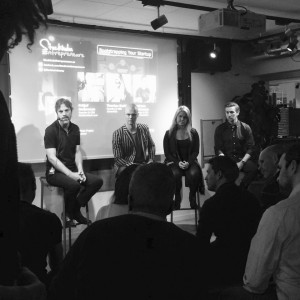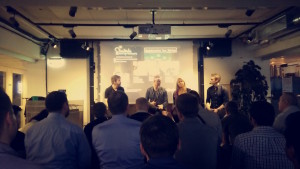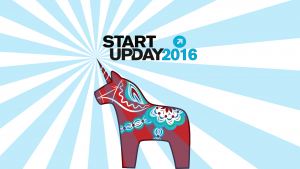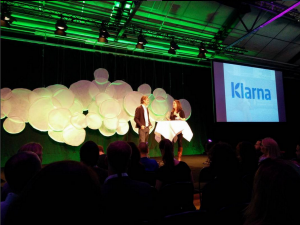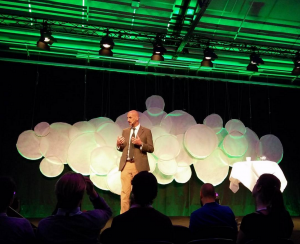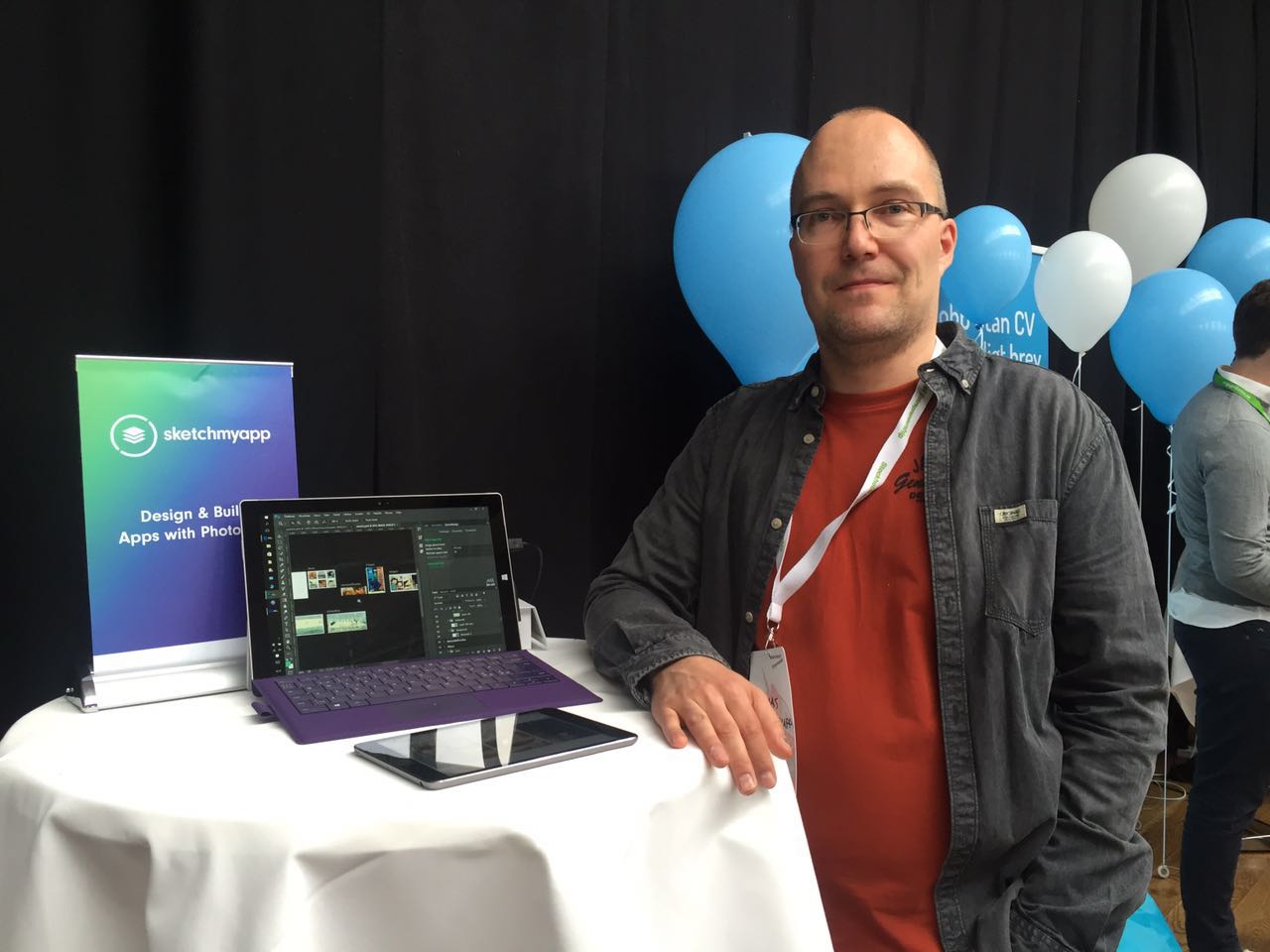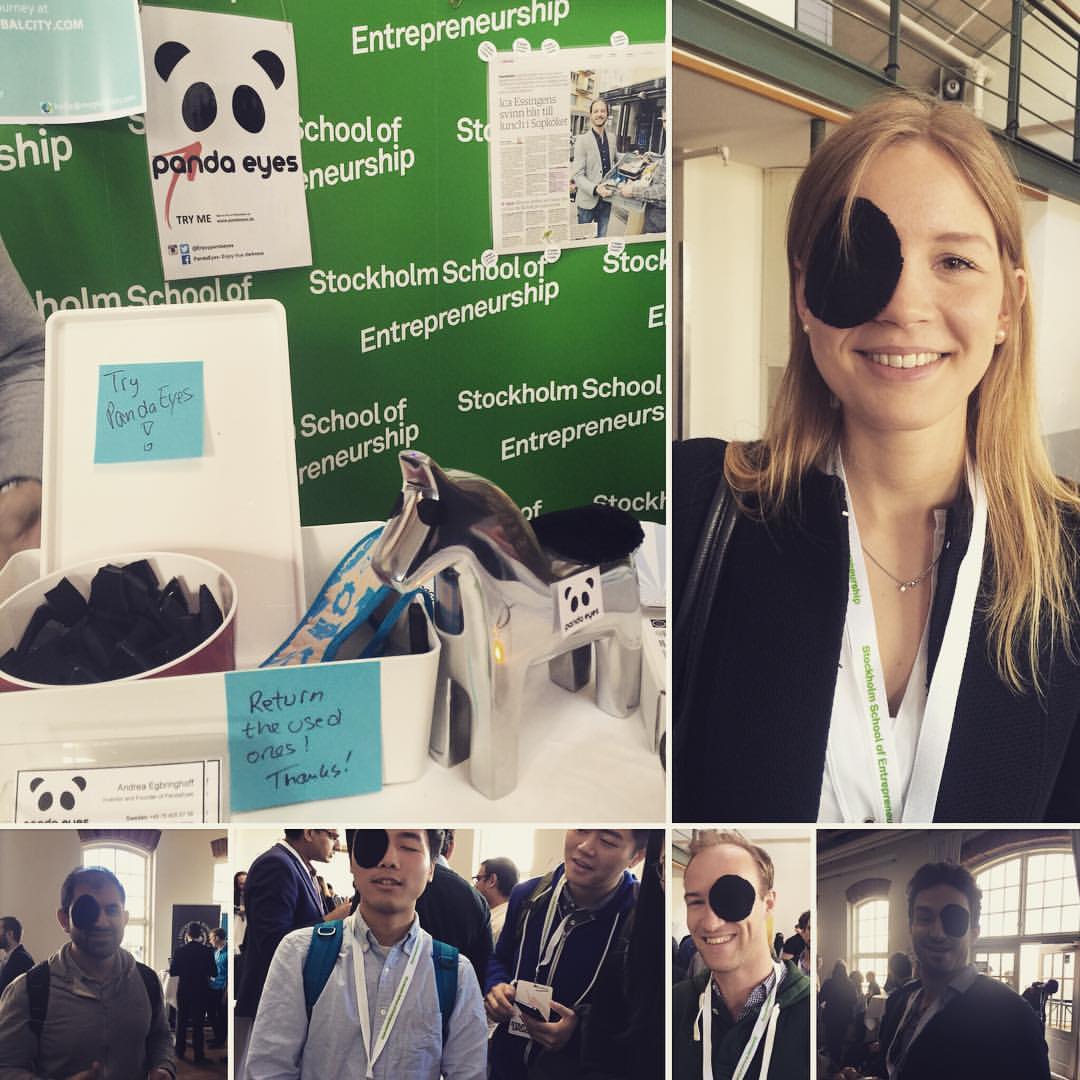From left to right: Peter, Fritjof, Therése, Andreas
Definition of Bootstrapping : To start a business without external help or capital
Bootstrapping is definitely one of the main challenges of startups, and the speakers during this event shared personal anecdotes and distilled their years of experience into tips for the aspiring entrepreneur.
Before I delve into the content of the talk, let me introduce the speakers.
Event Panelists:
Fritjof Andersson – Founder and CEO, RelationDesk.com
Therése Gedda – Founder and CEO at 30minMBA
Andreas Andersson – Founder and CEO of DMG Education
Event Moderator:
Peter Fosso (from USA; Founder of Global Music Project, NetMusic Entertainment, Stockholm Entrepreneurs, etc.)
The format of the talk was a panel discussion where the 3 speakers and a moderator sat in front of an audience who would them ask them questions. I found it to be an interesting and informative 2 hour long discussion, and I was glad that the panelists were there to help start-ups and did not try pitching their products.
Here are some stuff I learnt from the discussion and the questions that were asked.
- How do you save money on software spending for a startup?
- Communications Software – Use Slack (it’s a whatsapp for businesses, and is geared towards making collaborations easier)
- Accounting Software – Use Speedledger, Fortnox
- Cloud Storage – Just stick to your google drive/ dropbx
Most importantly, it comes down to what you think needs to be paid for, and what you think you can save by doing it yourself/ making use of free resources. Therése even said what some startups do was to take photos of their receipts and send them to a freelance accountant who does small accounting jobs for a cheap fee.
2. What is your work-life balance and work culture in the startup?
- 1-2 years without salary is a norm.
- Getting personal working space is recommended. Working at home will mix private and work life which could prove to be a bad idea as work life takes over private life eventually.
- Do anything that fits you. Work culture of startups aims at maximising the efficiency and not falling into the trap of existing office models that traditional large firms run. Employees are given free a choice on where and when they want to work, and this is not limited to within Stockholm. Some of the panelists had full-time employees as well. You do not have enough money to implement a traditional workplace anyway.
- Environment is important. When sharing workspaces with other companies, their culture can affect yours and it is important to choose a company you are comfortable with to share a workspace. (e.g. A Tech startup can find another tech startup to share a workspace, pooling together resources and expertise.)
- Standing meetings! They are apparently more efficient than seating ones where computers and mobile devices ensure our attention span is capped at a long 3 seconds. Maybe someone could try this out?
3. Where is the most money wasted?
- People waste money and energy when they are not focused. When they do what other people do and not what they should do.
- Most startups gamble on what they need (e.g. Business plans, accountants, office space), and while one is never certain on what he needs, it is good to prioritise the resources, and time is usually the most important resource.
- Limited resources might prove to be a boon to a company as it encourages creative thinking.
4. How do you market/ advertise your products cheaply?
- By value adding to a customer’s experience, they are more likely to pass on the company’s brand through recommending it to their peers/friends, and this is one of the strongest and cheapest advertising tools
- By actively engaging in meetups/ mingling sessions will give you the opportunity to showcase the your products and brand.
The discussion later went on to how building the team and being sure of your goals was key to success in a startup. All 3 panelists emphasised on the importance of knowing the reason and purpose of them knowing why they founded the start-up. It was their common opinion that aligning your purpose and beliefs was a very important motivational tool for both themselves and their employees as well. It provided them with the direction on making decisions on how the company should be run, and attracted like-minded employees and customers as well, which creates a strong and united team culture within the company.
Another important piece of advice that was given by them was that unicorns are after unicorns after all and while it is sort of a taboo to mention to VCs and angels that being one was not a goal of your company, it was being realistic. At times, having a company that was profitable and could grow based on funding from oneself was a better idea than trying to become a billion dollar valued company that had no tried and tested profit-making strategy.
I will end of with some final quotes from each panelist.
Fritjof : “Refugees can be very highly skilled in Sweden as well.” – On how to recruit quality individuals into the team inexpensively.
Therése : “Do things properly right away, do not keep it hanging. It takes more time later and keeps your attention.”
Andreas : “You don’t have to be a tech person to start a tech company.” – He was a tour manager/guitarist/ singer before founding the start-up.

